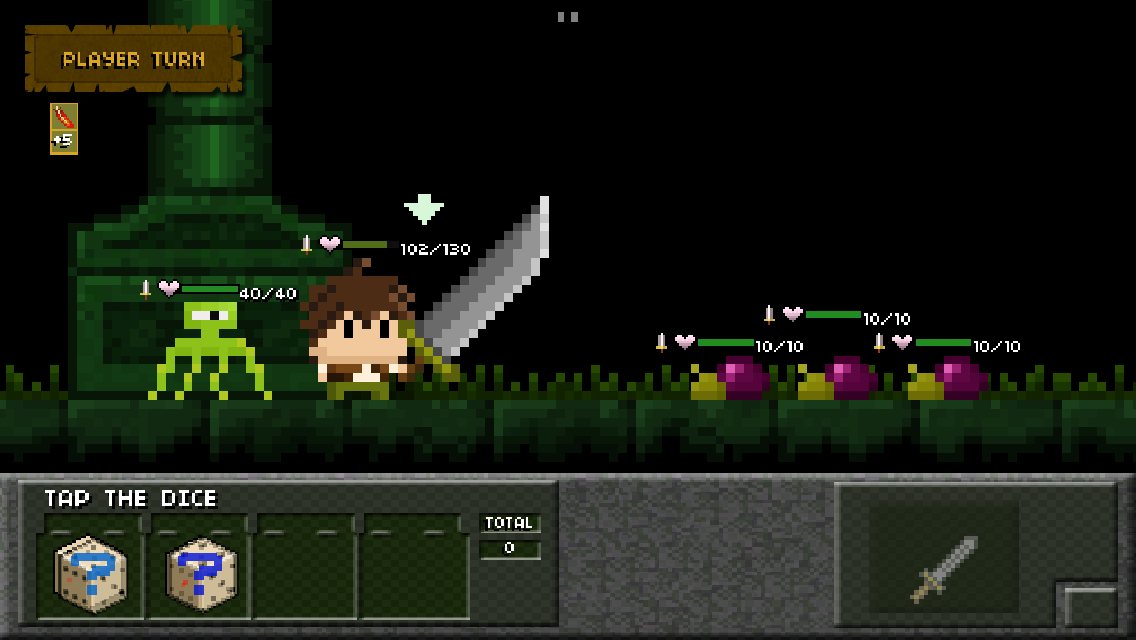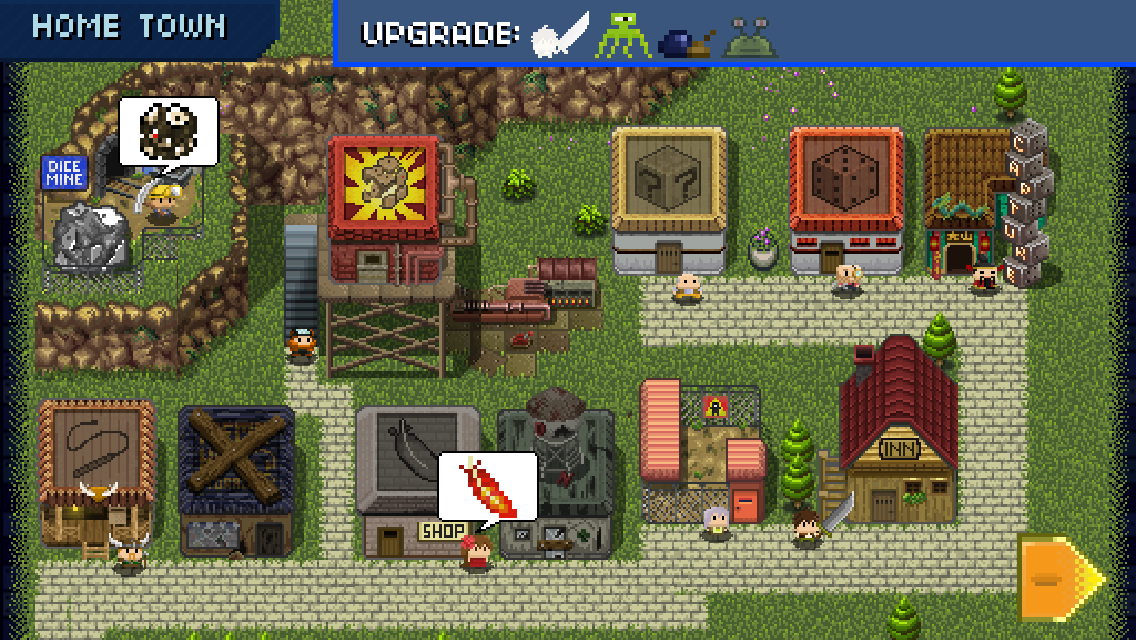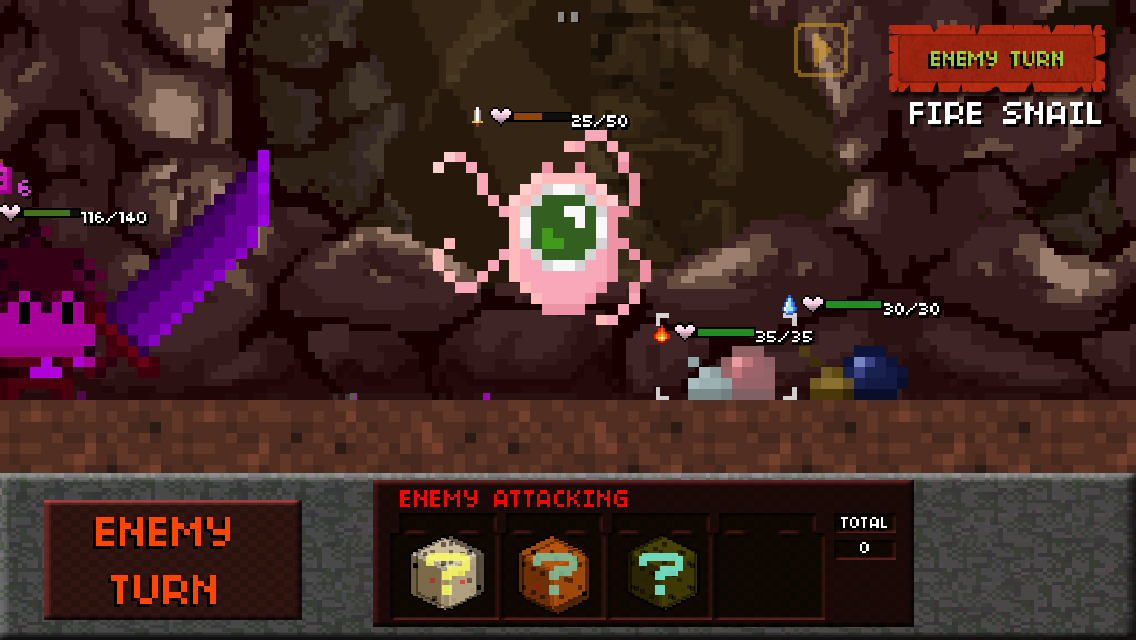 When I was younger, I never in my wildest dreams would have imagined bite-sized RPGs to work at all, let alone become popular. Of all game genres, the RPG was the one where you had to set aside a pretty good chunk of time on a fairly regular basis to see the games through, and that long-term investment seemed to be an intrinsic part of the appeal. Yet, here we are today, and RPGs that can be enjoyed in two or three minute slices are not only successful and prolific, they actually seem to have taken the majority position in the genre over their more time-intensive forebearers. With the benefit of hindsight, you can kind of see how it happened. Most people love particular aspects of RPGs, with the satisfaction of raising a character from weak to ultra-powerful being one of the more popular elements. At the same time, not everyone enjoys sinking in the copious amount of time and focus that’s usually required. Developers found a way to give those people what they wanted while cutting away what they didn’t, and it seems to have gone well, especially on mobiles.
When I was younger, I never in my wildest dreams would have imagined bite-sized RPGs to work at all, let alone become popular. Of all game genres, the RPG was the one where you had to set aside a pretty good chunk of time on a fairly regular basis to see the games through, and that long-term investment seemed to be an intrinsic part of the appeal. Yet, here we are today, and RPGs that can be enjoyed in two or three minute slices are not only successful and prolific, they actually seem to have taken the majority position in the genre over their more time-intensive forebearers. With the benefit of hindsight, you can kind of see how it happened. Most people love particular aspects of RPGs, with the satisfaction of raising a character from weak to ultra-powerful being one of the more popular elements. At the same time, not everyone enjoys sinking in the copious amount of time and focus that’s usually required. Developers found a way to give those people what they wanted while cutting away what they didn’t, and it seems to have gone well, especially on mobiles.
Publisher Kongregate is no stranger to these waters, having released Lionheart Tactics (Free) and the phenomenal Cardinal Quest 2 (Free), among others. Their latest offering, Tiny Dice Dungeon (Free), from developer Springloaded Software, brings a lot to the table. Some of it is unusual, while other parts might as well be written in the genre manual, but I can safely say, I’ve never seen a game with quite the same combination of things as Tiny Dice Dungeon. While it initially comes off almost painfully simplistic, it gradually adds elements to the point that it almost feels a bit overdone in some ways.

You play as a hero who comes upon a village that has been sacked by monsters. Your goal is to battle your way through various dungeons, rescuing villagers and defeating monsters in a quest to restore peace to the world. In terms of structure, it’s not terribly far from Puzzle & Dragons (Free) and its many spawn. You’ll choose a stage, fight your way through a set number of battles, fight a boss at the end, get some money or loot to upgrade your character with, then choose another stage and do it all over again. As you clear stages, the razed village slowly rebuilds, opening up new elements of the game. Your character will also gain levels, with certain levels bringing with them a substantial increase in power. Your starting character’s weapon of choice is a hefty sword, but your weapon of choice is a set of six-sided dice.
The battles in Tiny Dice Dungeon are turn-based. Each battle participant’s action is determined by a roll of the dice. What comes out of it depends on what kind of dice they’re using and the number they’ve rolled. You can roll as many times as you want to on your turn before inputting the command, but if you roll a one, the game considers it a missed attack and your turn is over. That’s the basic hook of the game. How far are you willing to push your luck? If you always play it safe, you won’t get far. At the same time, risking too much, too often will teach you how well the pacifist approach works. The rolls themselves are determined by luck, but how far you’re willing to ride that luck is up to you. It’s a straightforward system with almost immediate appeal.

There’s a bit more to it than that simple outline, of course. For example, by delivering an attack that does more damage than the enemy’s remaining HP, you’ll earn extra money and heal your character in the amount of the excess. Eventually, you’ll earn new types of dice that allow you to heal, do elemental damage, incur status effects, or just plain multiply your damage output, though your character can only bring a few dice at once in the beginning, and that number only rarely increases. You’ll also unlock the ability to catch monsters fairly early on, allowing you to bring them along as party members. At first, catching the monsters just requires you to deliver an attack that does exactly as much damage as their remaining HP, but stronger monsters require the use of special dice called capture dice. Having extra party members is essential to progressing through the game, and having the right kind of monsters backing you can make a tough fight into a breeze.
The way these elements work together to prod you into ignoring your common sense and going for just one more roll of the dice before launching your attack is beautiful. The handsome rewards for pushing your luck do a great job of encouraging you to do so, an important lesson if you hope to get anywhere in the long run. I’m not completely sold on how vital a role luck plays in the basic gameplay, but I have to admit, the developers have done it with style here. There’s more depth here than there initially appears to be. The game even seems to have trouble with its own complexity, sometimes giving inadequate or confusing explanations, and having a generally disorganized and awkward user interface.

That’s a problem, since the game just keeps layering on more and more stuff. There’s dice, item, and weapon-crafting, monster enhancement, purchasable upgrades and boosts, a PVP mode, and more. It’s kind of insane how just when you think you’ve got the game fully opened up, something else shows up that requires you to rethink it. Like a bowl filled to the brim, sometimes stuff spills over the side, and it’s not always pretty, but you can’t help but appreciate the game’s ambition. If some other awesome game in the genre has it, Tiny Dice Dungeon tries to jam it in somewhere. Just when you think it’s all done, you’ll unlock another new type of hero and have a whole bunch of new monsters to fight and dice to master.
Perhaps unsurprisingly, not everything comes together perfectly. The game feels very grindy at times, and it feels especially slow when you’re between certain upgrades, level-wise. There are definite brick wall stages where you’re simply not going to be strong enough to proceed without spending some time on earlier stages grinding for levels, gold, better equipment, and monsters. Uncut dice, effectively the game’s premium currency, are particularly hard to come by, making it a truly painstaking process to get the dice you desperately need to succeed. Of course, most of this can be chalked up to the game’s free-to-play status. Although the game also has a stamina meter, that aspect doesn’t chafe nearly as much as the rarity of the uncut dice drops, though it does cap how much time you can spend grinding to get a meager chance at earning them.

As mentioned earlier, the UI is sort of a busy mess, which describes the overall look of the game quite well. The graphics go for a retro pixel-art style, but it’s wildly inconsistent. The town is extremely detailed and colorful, the stage backgrounds seem a bit less sophisticated but still somewhat detailed, while the characters and monsters are quite rudimentary. Everything kind of mismatches everything else. Of course, art is always going to be subjective, but I didn’t really care for the monster designs in this game at all. They’re ugly, and not in a cool way. The game does do a lot of neat scaling and panning during battles, so it’s not without its moments, visually speaking. The music and sound is pretty firmly planted in 8-bit nostalgia, but the compositions of the tunes themselves are quite good. I wish the pieces were a little bit longer, since they end up looping often in battles, but the quality of what’s here is nice.
Tiny Dice Dungeon is generally fun to play and it’s packed full of interesting ideas, even with its shortcomings. It’s assuredly rough around the edges and the balancing needs more work, but if the posts the developers have made in our forums are any indication, they’re devoted to hearing feedback and updating the game to improve it. As it stands now, it’s a game that is great fun in bursts with some rough stretches in between, but one that unfortunately winds up in an unpleasant grind unless you start paying up regularly for uncut dice. It’s definitely worth checking out for free, however, warts and all, even if only to appreciate its design ambitions.